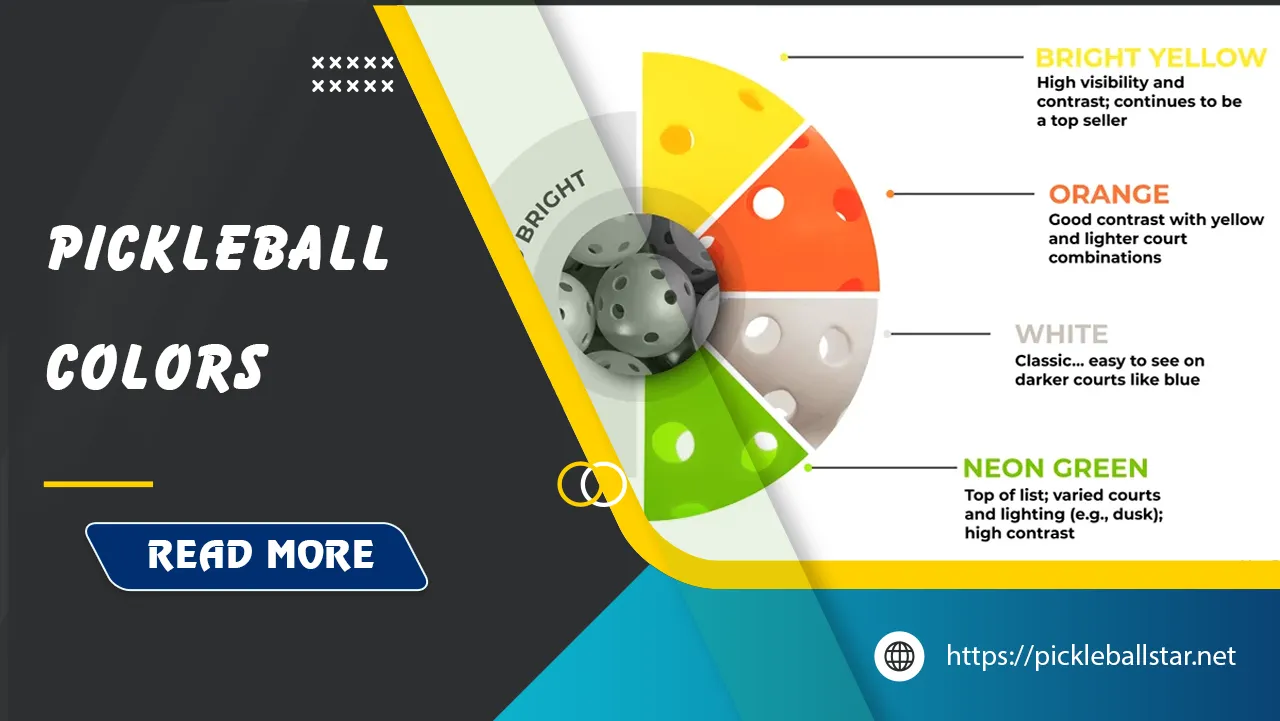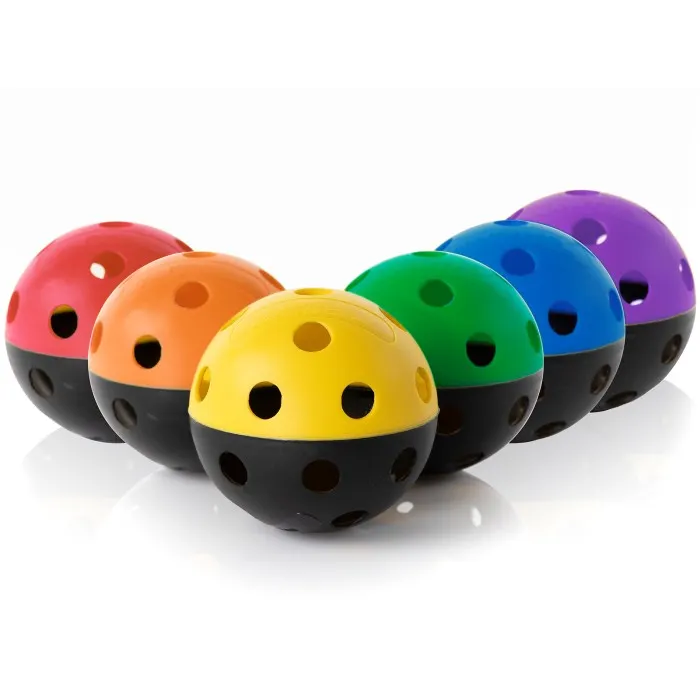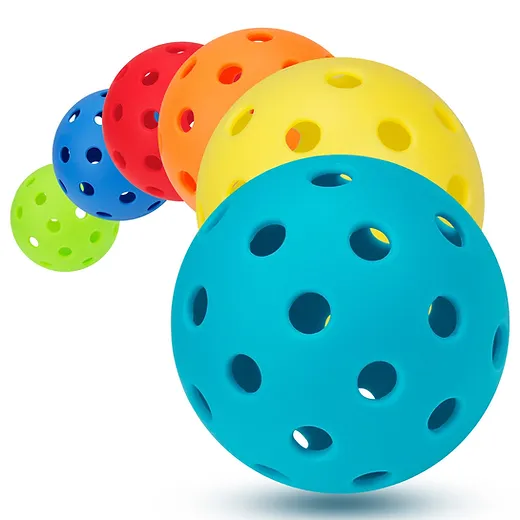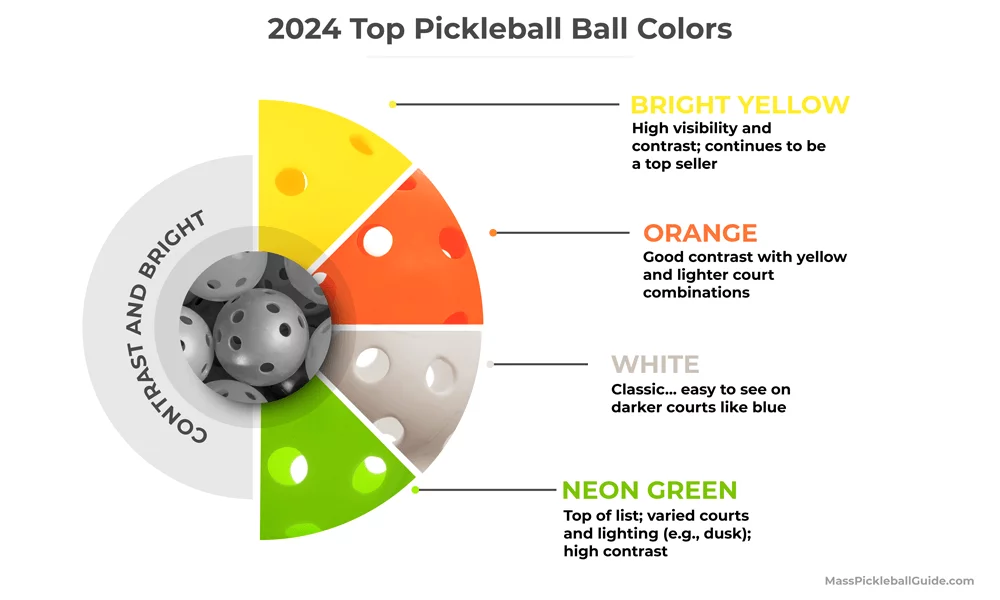Pickleball Colors: Finding the Perfect Palette for Your Game
Imagine playing a game set at the brink of dusk, the sky blending into deeper hues, and the court lights flickering to life. How easily can you track the ball? Now imagine the same setting, but this time the ball is distinctly yellow, piercing through the dim surroundings. The importance of picking the right color is not just hypothetical but a tangible, game-changing factor. Let’s explore how leveraging pickleball colors can not only enhance your performance but also deepen your appreciation for the game.

Visibility and Tracking: The Importance of Color Contrast
Visibility and tracking revolve around one fundamental concept: color contrast. A ball needs to be seen to be hit, and the easier it is to see, the quicker the reaction times and the more accurate the gameplay.

- How does color contrast make it easier to see the pickleball during play? At the core of pickleball’s gameplay is the need for quick reactions. Visibility is enhanced when there’s a stark contrast between the ball and the court surroundings. A bright-colored ball like neon green stands out dramatically against a blue or black court, making it easier to track.
- Best color combinations for pickleball in different lighting conditions:
- Outdoor Daylight: Bright colors like yellow, orange, and neon green work best as they stand out against natural landscapes.
- Indoor Lighting: Indoor gyms often have artificial lighting that may cast shadows or glare. Balls in colors like yellow and white provide clear visibility.
- Low Light Conditions: Neon colors like bright orange or neon green are excellent choices for dusk or poorly lit environments.
- Are certain colors better for indoor pickleball than others? Absolutely. Indoor environments typically offer controlled lighting, but walls and floors can vary greatly in color. This is why indoor pickleballs often come in bright hues like lime green or yellow to create a stark contrast against darker walls or flooring.
Consider this interesting analysis: A study from the Journal of Sports Science revealed that players’ reaction times improved by nearly 20% when they used a ball color that provided high contrast against the background. This indicates that selecting the correct ball color for your environment can not only optimize visibility but also significantly enhance your performance.
Player Psychology: How Color Affects Performance
Colors profoundly impact our psychological states, and the realm of pickleball is no exception. The selection of colors for your pickleball gear or surroundings can elevate your mood, sharpen focus, and possibly boost your confidence.

- The psychological effects of different colors on pickleball players:
- Red: Known to stimulate energy and excitement but may also increase aggression. It can make you more alert but may lead to quick fatigue.
- Blue: Provides a calming effect, fostering concentration and stability. Blue courts or gear might help reduce anxiety during high-stakes matches.
- Yellow and Orange: Colors of optimism and joy that can enhance mood and encourage upbeat, energetic gameplay.
- Can choosing specific colors help increase confidence or focus? Yes, color affects psychological states. For example, green is often associated with health and tranquility, promoting a sense of well-being. Opt for green or blue attire if you need to calm pre-match jitters. Conversely, donning red could give you a competitive edge by raising energy levels.
- Using color psychology for competitive advantage:
- Pre-Game Rituals: Wearing colors that boost your mood or confidence levels during warm-ups can transition your mindset into a competitive state.
- Mind Game: Subtly influence your opponent’s psychology. If your rival is known to get easily flustered, wearing bright red might keep them on edge.
- Focus Zones: Create court areas in contrasting hues to signal different strategies or play zones, aiding mental clarity during intense rallies.
The intricate dance between colors and emotions can be a secret weapon in your arsenal. Integrating the right hues can indirectly enhance your proficiency, leading you on a path to more victorious outings on the pickleball court.
The Evolution of Pickleball Colors: From Tradition to Innovation
Colors in pickleball have shifted from traditional norms to vibrant expressions, reflecting the sport’s journey and players’ evolving preferences.

- Why were yellow and orange initially chosen for pickleball? Historically, pickleball began with yellow and orange balls due to their high visibility on light or wooden surfaces. These colors were not just randomly picked but were rooted in practical needs providing visibility under varied lighting conditions.
- The introduction of new pickleball colors: As the sport grew, so did the need for diverse color options. Factors such as:
- Technological advancements: New dyes and manufacturing processes enabled a wider palette.
- Player feedback: Preferences shifted, with players demanding colors that best suited different environments.
- Aesthetic appeal: The evolution of pickleball also brought in the personal style element where players wanted balls and gear that resonated with their identities.
- Modern players’ views on more color options: In recent surveys and forum discussions, players often express appreciation for the wider range of colors. Whether it’s through practical applications (better visibility) or personal preferences (matching attire), modern pickleball players relish the ability to choose from a variety of colors that cater to their individual needs and playing environments.
Changing this paradigm signifies not just a shift in aesthetic appeal but also the sport’s strategic components. Progressive colors mean accommodating more players with diverse visual needs and preferences, solidifying pickleball’s accessibility and inclusiveness.
Read more: Pickleball Ball Holders: The Ultimate Guide to Storage and Organization
Common Questions
- Is there a “best” pickleball color for everyone? No single color fits all. The “best” color boils down to individual preferences and the playing environment:
- Era Preferences: Older players might stick to traditional colors like yellow for its old-school charm.
- Young Enthusiasts: Younger players might gravitate towards trendy, vibrant hues like neon or teal for a fresh look.
- What are the rules regarding pickleball colors? The USA Pickleball Association sets some guidelines on tournament-approved ball colors, but casual play allows for more freedom. Official balls are usually limited to colors ensuring visibility and consistent bounce characteristics.
- Top 3 best pickleball balls in 2024: Some of the top colors covered in discussions and reviews include:
- Onix Fuse G2: Known for its renowned yellow balls.
- Franklin X-40: Famous for its bright green balls used in major tournaments.
- Dura Fast 40: Acclaimed for its orange hue preferred by advanced players.
Brands sometimes even offer multi-color packs to cater to mixed-preference groups, demonstrating an inclusive approach to the sport.
Conclusion
Understanding and utilizing pickleball colors can revolutionize how you engage with the sport. From investing in high-contrast balls for better visibility to using color psychology to boost performance, the choice of color is far from trivial. Embrace the evolution and variety in pickleball colors to enrich both your enjoyment and efficacy on the court.
For those looking to delve further into the interplay of color and sports, numerous resources, such as Sports Colour Psychology, offer detailed insights and analysis. As pickleball continues to grow, one can only expect new trends and innovations in colors and designs, making the game even more exciting and inclusive for enthusiasts around the world.
In conclusion, next time you pick up a paddle and ball, consider the kaleidoscope of colors available not just for their aesthetic pleasure but for their potential impact on your game. The right color can lead you through more engaging and victorious plays, making your pickleball experience both beautiful and strategic.
